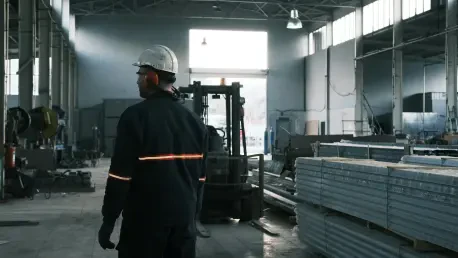Türkiye’s manufacturing sector has long been a cornerstone of the nation’s economy, but recent economic turbulence has cast a shadow over its performance, leaving industry watchers questioning whether a turnaround is on the horizon. In August, a glimmer of hope emerged as key indicators pointed to a slowing decline, though significant challenges remain. Data from the Istanbul Chamber of Industry (ISO) and insights from the Purchasing Managers’ Index (PMI), compiled by S&P Global, reveal a complex picture of cautious improvement amid persistent headwinds. While the PMI rose from 45.9 in July to 47.3 in August, it still lingers below the critical 50 threshold that signals growth. This incremental progress, however, marks the slowest pace of decline since April, hinting at potential stabilization. As economic pressures like currency depreciation and weak demand continue to weigh heavily, the sector stands at a critical juncture, with recovery dependent on both domestic resilience and global market dynamics.
Economic Indicators and Sector Performance
Slowing Decline in Key Metrics
The latest PMI figures offer a cautiously optimistic view of Türkiye’s manufacturing landscape, with the index climbing to 47.3 in August from a lower base in the prior month. Though still indicative of contraction, this uptick represents the mildest downturn in several months, suggesting that the sector may be approaching a turning point. Notably, the decline in new orders and production has softened, with both metrics recording their weakest contractions since February. This trend points to a potential easing of demand pressures that have plagued manufacturers for much of the year. However, the overall picture remains far from robust, as the sector grapples with structural issues that prevent a full return to growth. Currency fluctuations, particularly the depreciation of the Turkish lira by 16% against the U.S. dollar since the start of the year, have exacerbated input cost inflation, forcing manufacturers to navigate a delicate balance between rising expenses and competitive pricing strategies in a challenging market environment.
Persistent Challenges Despite Progress
Despite the encouraging signs in output and order metrics, Türkiye’s manufacturing sector faces substantial hurdles that temper optimism about a swift recovery. Employment figures paint a particularly grim picture, with the sharpest job cuts recorded since April 2020, driven by sustained weak demand that has forced companies to scale back operations. Export orders have also declined at a steeper rate than total new orders, reflecting broader struggles in international markets that compound domestic challenges. The impact of the lira’s depreciation cannot be overstated, as it has driven input costs to new heights, compelling manufacturers to pass on some of these expenses through higher selling prices. Yet, in a surprising twist, inflation in final product prices has eased to its lowest level since early in the year, highlighting a complex dynamic where cost pressures are not fully translating to consumer prices. These contradictions underscore the uneven nature of the sector’s current state, where progress in some areas is offset by deepening difficulties in others.
Sectoral Variations and Future Outlook
Diverse Performance Across Industries
A closer look at Türkiye’s manufacturing sector reveals stark disparities in performance across different industries, with some showing resilience while others falter under economic strain. Basic metals have emerged as a bright spot, posting the strongest expansion since April 2023, while wood and paper products recorded growth for the first time in five months, signaling a potential shift in momentum. In contrast, the textile industry has borne the brunt of the downturn, experiencing the steepest declines in output and new orders alongside unprecedented job cuts. Similarly, sectors like chemicals, plastics, and rubber have reported significant staff reductions, reflecting the broader demand slump. On a more positive note, machinery and metals have managed modest job creation, offering a counterpoint to the widespread layoffs. These variations illustrate the fragmented nature of the recovery, where certain industries adapt more effectively to rising costs and competitive pressures, while others struggle to find stable footing in a volatile economic landscape.
Cautious Optimism for the Months Ahead
Looking toward the future, there is a sense of cautious optimism among industry analysts regarding Türkiye’s manufacturing sector, though the path to recovery remains uncertain. Andrew Harker, economics director at S&P Global Market Intelligence, has noted that while business conditions continue to pose challenges, the slowing pace of declines in output and new orders offers a sliver of hope. If these trends persist, there is potential for brighter prospects as the year progresses, though much depends on stabilizing economic factors such as currency value and global demand. Interestingly, some sectors have adopted unique pricing strategies amid rising input costs, with industries like wood and paper products and clothing and leather lowering selling prices in a rare move that suggests competitive pressures or strategic adjustments. This adaptability could play a crucial role in determining which sectors rebound first. As eight out of ten monitored industries reported weaker output in August—down from nine in July—there is a subtle indication that the worst of the downturn may be behind, setting the stage for a gradual, albeit uneven, improvement.









